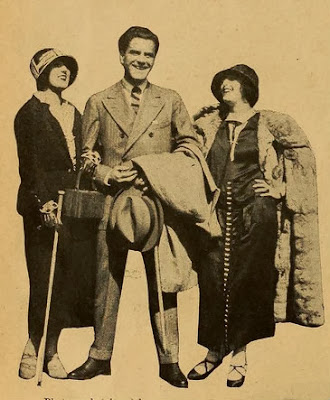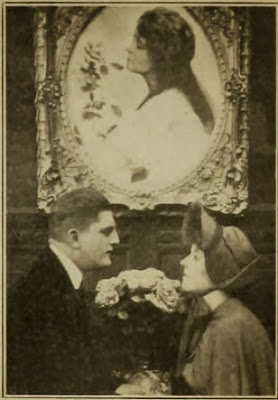Dorothy Gulliver is an actress that I knew very little about. Actually, make that I knew nothing about her. I had seen a picture of her somewhere and thought she was very interesting looking, and come to find out, she was a WAMPAS Baby Star! So, here is the lowdown on Dorothy.
Dorothy Gulliver was born Dorothy Kathleen Gulliver on September 6, 1908 in Salt Lake City, Utah. She was the third of six children born to Fred and Nellie Gulliver. I believe Fred made a living driving a truck and later had his own limousine service. Dorothy had two older brothers, Rodney and Alfred, and her younger siblings consisted of two sisters named Margaret, Olive, and Ethel, and a brother named Victor.
Like quite a few actresses out there, Dorothy got her break into the movie business after winning a beauty contest in her home state of Utah. The contest just happened to be sponsored by Universal Pictures who was offering a screen test to the lovely lady who won. Dorothy so impressed the men behind the camera that she was offered a movie contract.
She made her film debut in the 1926 short, The Winking Idol. Sounds like a great name for a Douglas Fairbanks or Errol Flynn biography.
Dorothy never became a huge star, but she did become a familiar face in the background of the more than 100 films she appeared in. She was also well known for a few bathing suit cheesecake photos she posed for that appeared in movie magazines.
She was part of a film serial called The Collegians that ran for 45 episodes. Dorothy played a character named June Maxwell and the premise of the series was that the audience would follow the same group of friends and faculty through their four years in college. The other actors who appeared in every episode were George J. Lewis, Hayden Stevenson, Eddie Phillips, and Churchill Ross.
In 1928, she was named a WAMPAS Baby Star along with Lupe Velez, Sue Carol, and Lina Basquette.
Also, like another WAMPAS Baby Star, Marion Aye, Dorothy appeared in quite a few Westerns, usually with Jack Hoxie.
During her later years, Dorothy's film roles become so small that she was only credited as "snack stand clerk," "salesgirl," or "New York theatregoer." I did read somewhere that she was involved in some kind of accident in the 1930s that caused her to take a hiatus from her career, but I don't know anymore information than that.
The final film she appeared in was 1976's Won Ton Ton: the Dog who Saved Hollywood. Her role in the film was "Old woman on bus" and even though the part was tiny, Dorothy would later vehemently deny that she was ever in the film. Can't say I blame her.
Dorothy Gulliver passed away on May 23, 1997 in Valley Center, California. She was cremated and her ashes were scattered.
Dorothy was married twice, but I am not sure about the dates. Her first husband was assistant director Jack Proctor and her second husband was publicist William De Vite (or De Vito) around 1926.
In 1929, an article was published in the San Jose News announcing that Harold Lloyd had found a new leading lady in Dorothy Gulliver. "My leading lady in this film will get the best break a girl has ever had in one of my pictures. That is why I have been so particular about choosing a girl. I wanted to be sure I had one who would meet with all of the requirements. I believe I have found that in Miss Gulliver" said Harold. It appears though that the movie either was never released or was never made because I haven't found any information about the two having starred in a movie together. Sad, really.
"They were all such fine actors, but I admit I was amazed when this actress asked, 'What is my motivation for going to the phone?'" ~~ Dorothy Gulliver to the Los Angeles Times when asked about Method actors.




















































